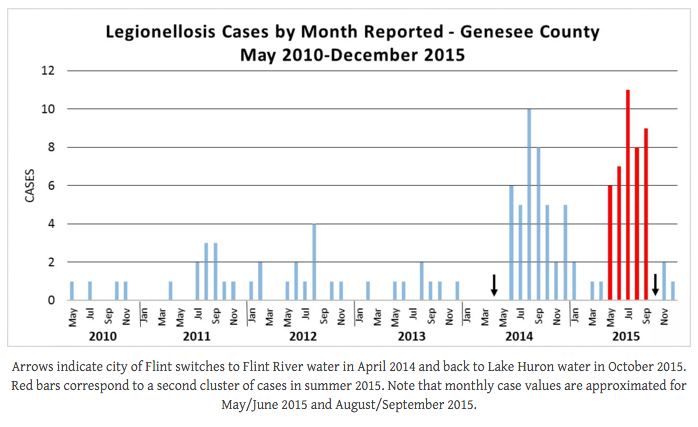This Is What the Water in Flint, Michigan Looks Like
By:
The water crisis in Flint, Michigan escalated on Friday as the state's top prosecutor announced an investigation to see if laws were broken in the time between April 2014 and October 2015. During that time, nearly all of the town's residents were exposed to lead poisoning and other contaminants in the water supply.
Also on Friday, the White House promised to "expeditiously" look into a request for financial and other help in Genesee County by Michigan Governor Rick Snyder, on Thursday night, the Detroit Free Press reported.
Related: You Need To Know About Flint, Michigan's Water Problem
But we also got a taste of what the cloudy, rust-brown tap water residents in the county were told was safe to drink actually looks like. Researchers at Virginia Tech posted the results of a study examining water samples from 271 homes in Flint over the summer, some of which met the Environmental Protection Agency's "toxic waste" designation. The Washington Post's Christopher Ingraham has a great visualization of the data charts in the Tech study.
The lead toxicity levels are measured in parts per billion. The researchers found even levels as low as 5 ppb is concerning in drinking water. Here are some of the WaPo graphics with ppb levels.
The news follows a particularly nasty week in the Rust Belt city, which also saw a spike of Legionnaires' disease that left 10 dead, Reuters reported. Between June of 2014 and November of 2015, when Genesee County was exposed to the contaminated water, there were 87 cases of the disease — half of which were connected to Flint water. Rates of the disease were abnormally high during that period.
 Flint Water Study - flintwaterstudy.org
Flint Water Study - flintwaterstudy.org
For months, users have taken to social media to post disquieting pictures of what appear to be samples of drinking and other public water sources collected in the Flint area.
